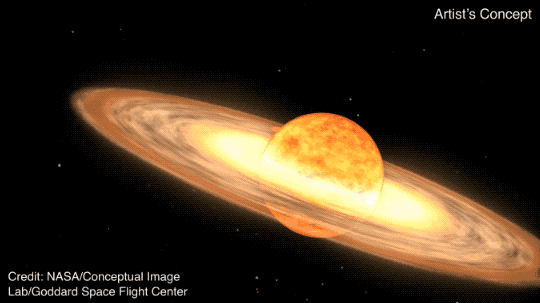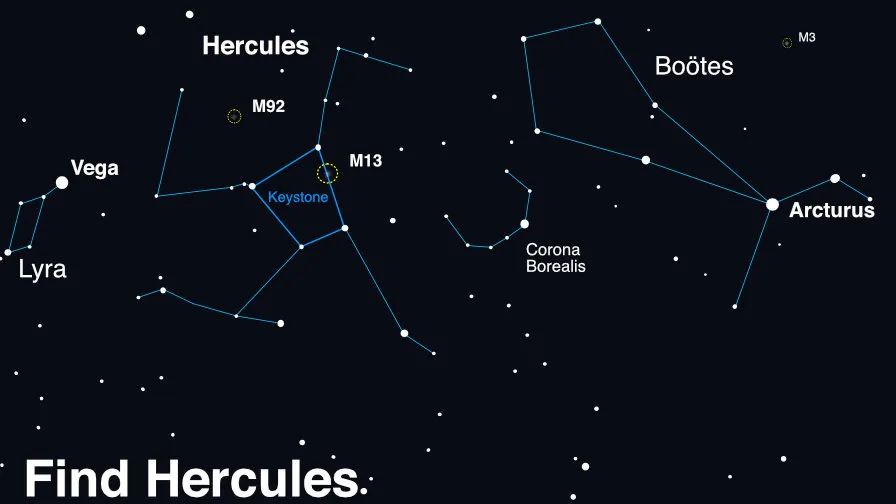A 'new star' could appear in the sky any night now. Here's how to see the Blaze Star ignite
The "Blaze Star" T Coronae Borealis will erupt with a magnificent explosion sometime between now and September, becoming visible to the unaided eye.

A dim star in the night sky 3,000 light-years from our solar system could soon become visible to the naked eye for the first time since 1946 — and you can easily find it in the night sky.
The "Blaze Star" — officially called T Coronae Borealis (T CrB) — is expected to brighten significantly between now and September 2024 from magnitude +10 (beyond naked-eye visibility) to magnitude +2, according to NASA. That's about the same brightness as Polaris, the North Star, the 48th-brightest star in the night sky. (In astronomy, the brighter an object is, the lower its magnitude; the full moon's magnitude is -12.6, for example).
The Blaze Star can be found in the constellation Corona Borealis, the "Northern Crown," between the constellations of Boötes and Hercules. The easiest way of finding Corona Borealis is by first locating some of the brightest stars in the summer night sky.
Related: A rare nova ignites a 'new star' in the sky this year
On any clear night, find the stars of the Big Dipper high in the northern sky. Trace the Big Dipper's handle of stars in a curve to Arcturus, a bright, reddish star above the eastern horizon. That's the famous "arc to Arcturus" star-hop. Rising in the east-northeast will be Vega. Now look between Arcturus and Vega (slightly closer to Arcturus) for a faint curl of seven stars — Corona Borealis. It will be high overhead after dark. Though you won’t be able to see the Blaze Star yet, it should become clearly visible before summer’s end.

The Blaze Star is a rare example of a recurrent nova, which means "new star" in Latin. It's a binary star system with a cool, red giant star and a smaller, hotter white dwarf star orbiting each other. Every 80 years, the red giant propels matter onto the surface of the white dwarf, causing an explosion. Other stars do something similar, but not on such a short timescale.
Astronomers think the Blaze Star is on the cusp of exploding again because it's following the same pattern as the last two explosions in 1866 and 1946. Ten years before both explosions, it got somewhat brighter, then finally dimmed again just before the big blast. That's precisely what's been happening, with the star growing brighter since 2015, followed by a visible dimming in March 2023. This familiar pattern suggests that another explosion is imminent.
Get the Space.com Newsletter
Breaking space news, the latest updates on rocket launches, skywatching events and more!
On February 10, 1946, the Blaze Star was 600 times brighter than it was just one week before. Once its brightness peaks, the Blaze Star should be visible to the naked eye for several days and just over a week with a pair of stargazing binoculars or a good small telescope.
Join our Space Forums to keep talking space on the latest missions, night sky and more! And if you have a news tip, correction or comment, let us know at: community@space.com.

Jamie is an experienced science, technology and travel journalist and stargazer who writes about exploring the night sky, solar and lunar eclipses, moon-gazing, astro-travel, astronomy and space exploration. He is the editor of WhenIsTheNextEclipse.com and author of A Stargazing Program For Beginners, and is a senior contributor at Forbes. His special skill is turning tech-babble into plain English.
-
Helio Cool. And it will be in the night sky through September, at least.Reply
Here is the location:
-
m4n8tpr8 The article writes: "Every 80 years, the red giant propels matter onto the surface of the white dwarf, causing an explosion."Reply
Nitpick: that's misleading. The red giant propels matter onto the surface of the white dwarf all the time, what happens every 80 years is that enough matter accumulates for fusion to start, which causes the explosion.
To be even more correct, it's not the red giant but the white dwarf's own gravity that propels the red giant's matter to its surface. The red giant just tries to expand, but all the plasma that moves beyond the zone where its own gravity dominates ("Roche lobe") falls into the zone dominated by the white dwarf's gravity.










